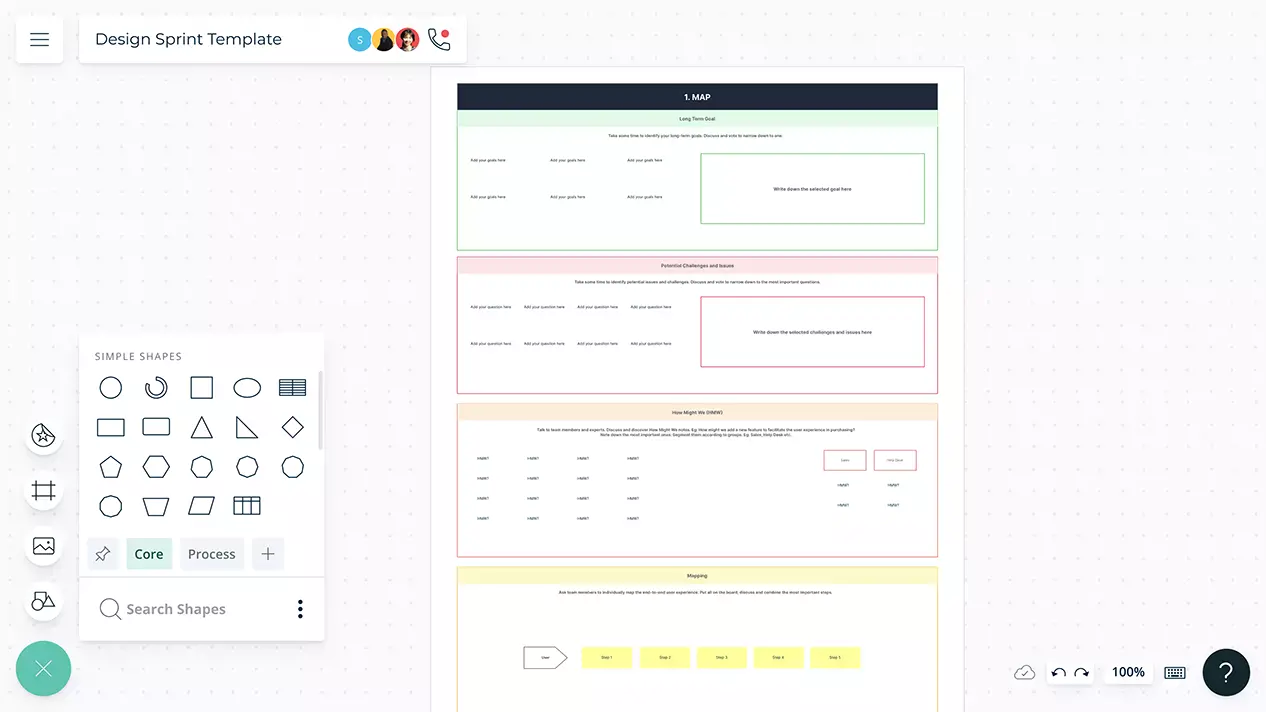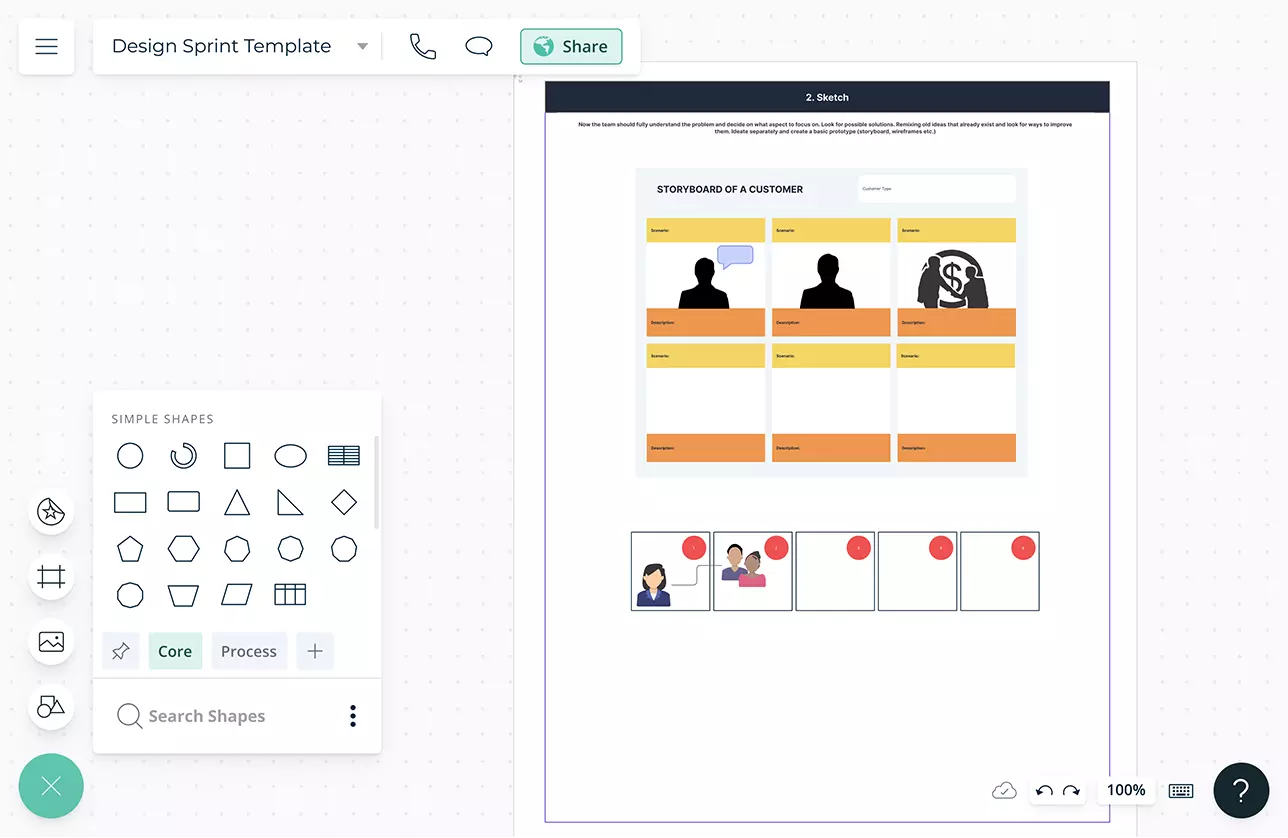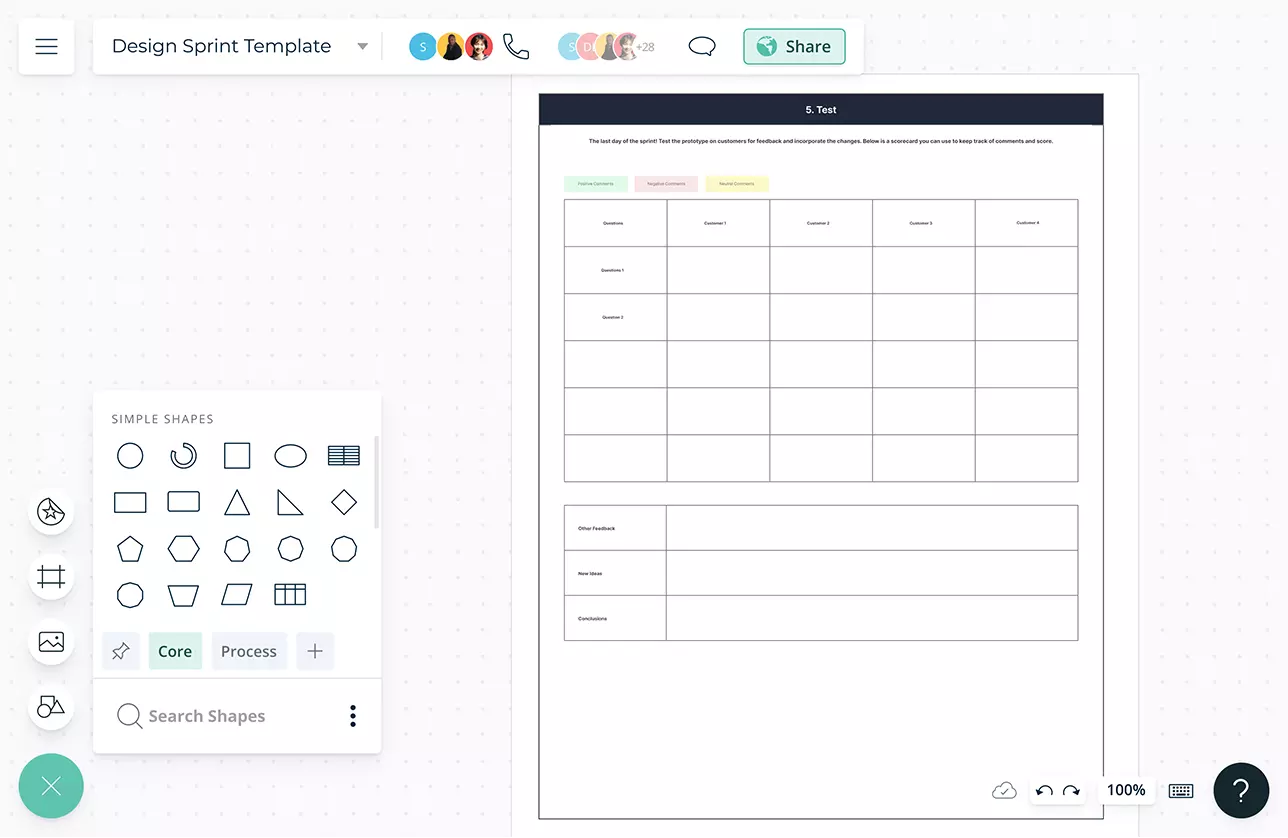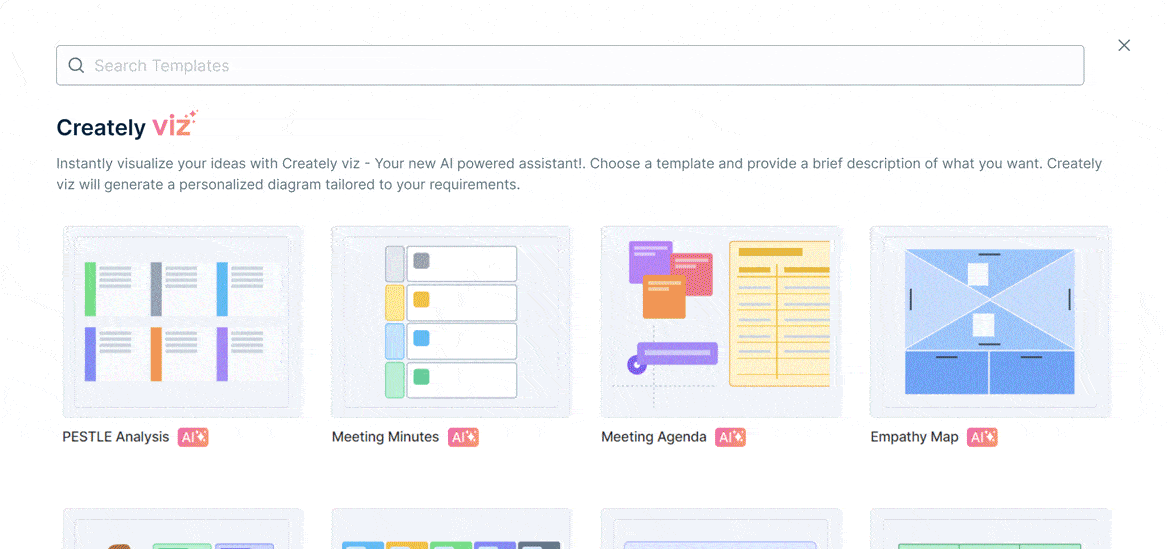Design Sprint Template
Create User-Centric Solutions Together
Run effective design sprints on a collaborative platform; generate ideas and test them in short iterative bursts.
- Complete set of design sprint toolkits
- Collaborative whiteboard to spark innovation
- Involve multiple stakeholders with real-time collaboration

- Complete set of design sprint toolkits
- Collaborative whiteboard to spark innovation
- Involve multiple stakeholders with real-time collaboration


Find Innovative Solutions to Design Problems

Complete set of design sprint templates to go from defining your design problem to testing solutions.
Intuitive virtual whiteboards to brainstorm, gather inputs, sketch and much more.
Attach data and references to any item on the canvas for inspiration and better decision-making.
Infinite canvas to keep all the elements of your design sprint together.
Run Engaging and Interactive Sprints

Involve multiple stakeholders in your design sprint to gather multiple perspectives.
Built-in video conferencing to have interactive and free-flowing idea generation sessions.
Comments and notifications to run both synchronous and asynchronous design sprints.
Full version history to keep track of progress during the sprint and revert to previous iterations.
Multiple access levels and roles to streamline managing, sharing, editing, and reviewing the output of design sprints.


Turn Ideas Into Actionable Plans

Record the outputs of your design sprints and organize them with frames.
Advanced navigation to link items on the canvas together to easily keep ideas organized.
Assign tasks to team members with due dates, efforts, and checklists to keep projects on track.
Kanban boards or timelines to organize tasks and implement the output of design sprints.

Generate and Evaluate Ideas Faster and Better Using AI for Design Sprint
Generate the Sprint Board Instantly
Use AI prompts to generate sprint boards with the relevant content for your tasks.Use AI to Map Problems to Solutions
Generate insights from AI to push products that users love.Efficient User Empathy Mapping
Use visual frameworks to better understand users’ needs. AI does the work for you.Quick and Easy Prototyping with AI
Speed up your design process by turning information into visualizations and iterations in no time.Keep Your Sprint on Track
Let Creately VIZ take care of the nitty-gritty details of organizing tasks and tracking progress, so you can focus on the big picture.

What is a Design Sprint?
A design sprint is a time-constrained ( usually five-day process) for validating ideas and solving big challenges through prototyping and testing ideas with customers. It uses the 5 phases of design thinking to get a team of diverse stakeholders together to think critically about a specific problem and design a solution around it.
How to Conduct an Effective Design Sprint?
- One of the most important aspects of running a successful design sprint is assembling a cross-functional team. This requires individuals with expertise across a diverse range of topics. Bring stakeholders together on Creately’s canvas and begin the 5 day process.
- Monday: Map- The first day of the sprint is where teams participate in structured discussions and charter a course for the rest of the week. It involves mapping out challenges, collecting data, and narrowing down on an ambitious but achievable challenge that can be solved within a week. This can be done with customer journey maps, empathy maps, how-might-we templates and other frameworks used for problem definition.
- Tuesday: Sketch- The day is dedicated to looking for possible solutions and involves remixing old ideas that already exist and looking for ways to improve on them. Each team member ideates separately and creates a basic prototype. This can be through illustrative storyboards or by creating low-fidelity wireframes just to indicate what the product will look like.
- Wednesday: Decide- By the 3rd day of the sprint, your team should have created a list of potential solutions for the problem. Wednesday is all about selecting the best solution and creating a final storyboard. It involves discussions and voting on which idea will be storyboarded and prototyped for user testing.
- Thursday: Prototype- The 4th stage of the design sprint is to actually build the product or a version that can be tested by users to gain feedback. This can be done through mockups, sketch designs, videos, or online demonstrations. Creating a prototype is an experiment in order to test out a hypothesis. This means you have to think critically about what you will build in order to get the feedback you need to validate or invalidate your hypothesis.
- Friday: Test- The last day of the sprint involves testing the prototype on customers. The aim is to gain feedback and incorporate changes back into the design. This can be done through usability testing where potential users actually interact with the prototype and share their thoughts and opinions.
- The design sprint doesn’t result in a finished product, but it does help to validate ideas quickly and affordably.
